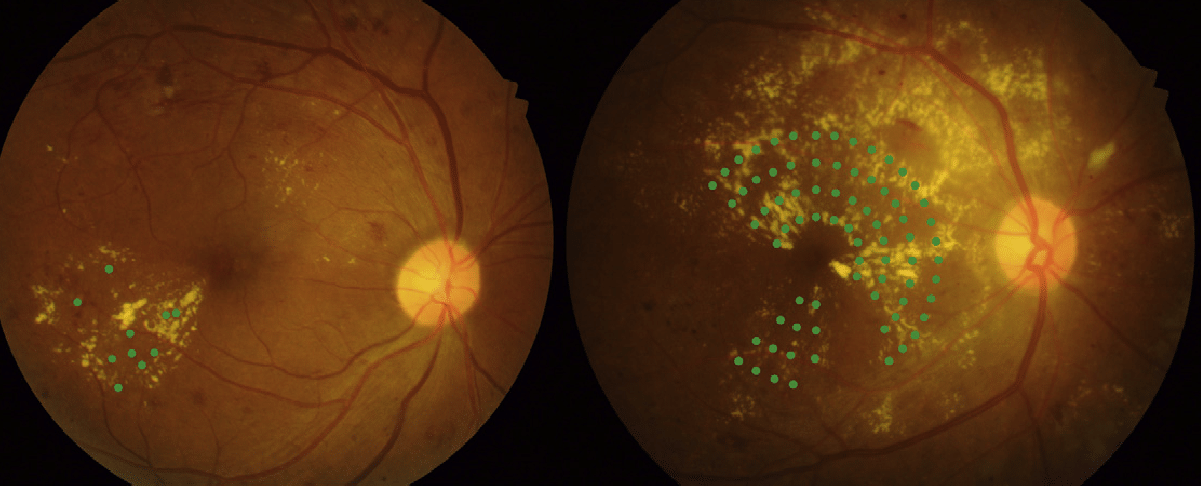 |
| Focal (left) or grid (right) photocoagulation, when combined with anti-VEGF, allowed reduction of injection frequency. Photo: Wei-Chun Chan/ Int'l J Gerontology. Click image to enlarge. |
Diabetic macular edema (DME) patients who receive combined treatment with aflibercept and focal/grid photocoagulation may see better functional outcomes despite receiving fewer intravitreal injections, a recent study suggested.
The exploratory study included 43 eyes of 32 combined therapy patients and 46 eyes of 38 standard-of-care patients, all of whom had DME. The study population received three monthly aflibercept injections followed by focal/grid photocoagulation and additional aflibercept PRN. Principal measurements at 12 months were intravitreal injection frequency, best-corrected visual acuity and central retinal thickness.
At baseline, there were no significant differences between groups regarding age, sex, body mass index, hemoglobin A1c, systolic pressure or type of diabetes, but the study population had a higher diastolic pressure (81.6mm Hg vs. 72.1mm Hg) and a shorter duration of diabetes (12.3 vs. 23.2 years). At month 12, patients in the study group had a higher visual acuity (79.6 vs. 74.3 ETDRS letters), despite having received fewer aflibercept injections (4.4 vs. 5.9), which more-than-likely consisted of only the three mandatory injections in the loading phase (39.5% vs. 13%).
“Future randomized studies are needed to evaluate the long-term efficacy of this combined treatment regimen,” the study authors concluded in their paper.
Jordensen MM, Vestergaard AH, Blindbaek SL, et al. Functional and structural efficacy of a novel combinational therapy of aflibercept and timely focal/grid photocoagulation in diabetic macular oedema: do clinical study results compare favorably with a standard-of-care treated real-world population? Acta Ophthalmol. June 8, 2022. [Epub ahead of print]. |

